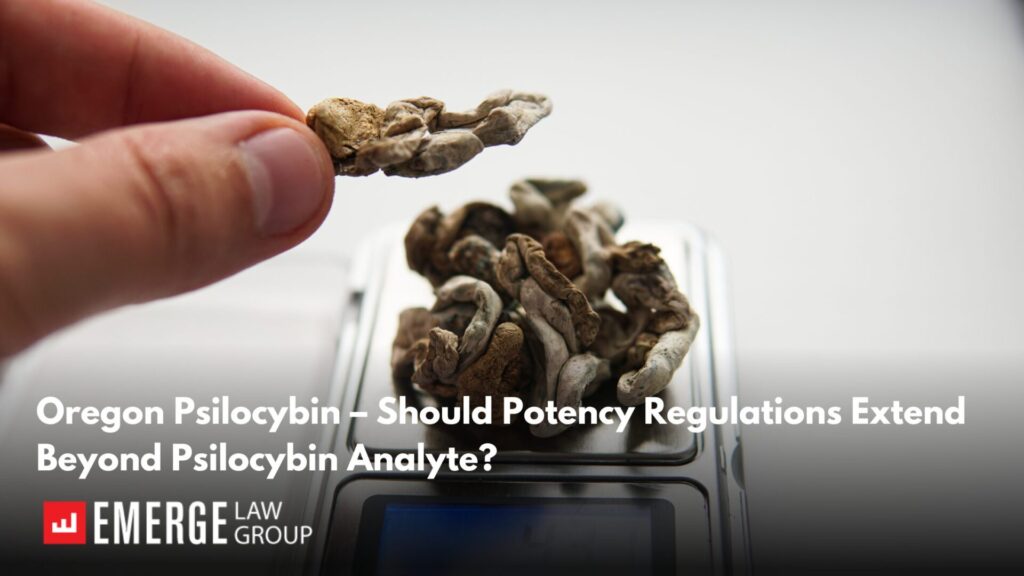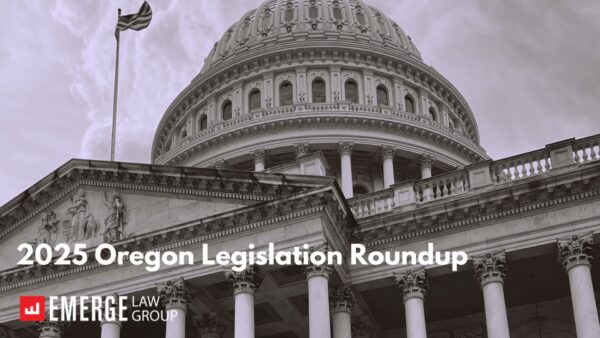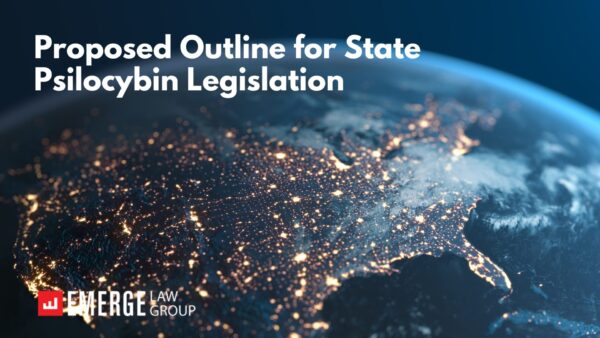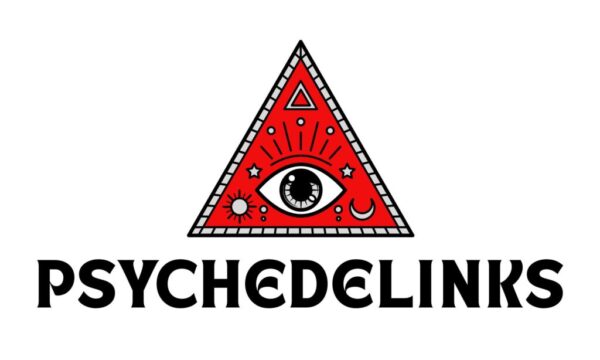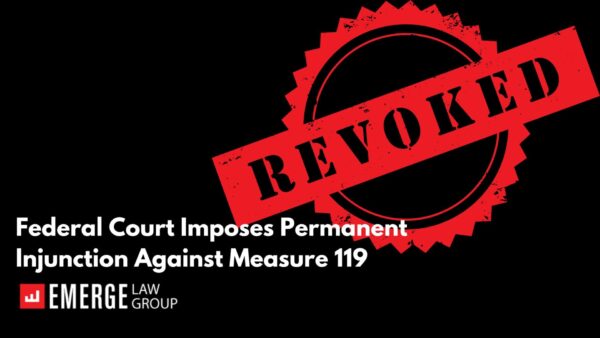Psilocybin mushrooms contain both psilocin and psilocybin. Psilocin is the active compound that induces mind-altering effects. Psilocybin (“psilocybin analyte” under OHA rules), although biologically inactive, rapidly converts into psilocin in the body. Concerns have been raised because the current OHA rules only mandate the labeling of psilocybin analyte. This omission of psilocin from labeling requirements raises concerns that facilitators and clients may not fully understand the potency of the products.
This has triggered growing discussions about the current Oregon Health Authority (OHA) rules for psilocybin analyte testing, labeling, and potency regulation. Complications have emerged because the Oregon Psilocybin Services Act defined “psilocybin” as “psilocybin or psilocin,” consistent with the language in Oregon’s controlled substances act.
During OHA rules advisory committee (RAC) meetings, it was pointed out that a regulatory definition distinguishing between psilocybin and psilocin was necessary because the statutory definition of “psilocybin” includes both compounds. Without clarity on exactly which compounds need testing and labeling, confusion could arise about how to comply with testing and labeling rules (in addition to other rules related to potency calculations, such as session duration and group size). In response, the OHA created the regulatory definition of “psilocybin analyte” to refer specifically to psilocybin alone (not psilocin), thereby making it the sole requirement for labeling under the rules, and the reference point for psilocybin product potency.
Oregon Environmental Laboratory Accreditation Program (ORELAP) rules require testing for psilocybin analyte and “Total Potential Psilocin” which means “the sum of the psilocin analyte concentration and 0.719 times the psilocybin analyte concentration. This number is the maximum theoretical concentration of psilocin in the sample.” One accredited lab, Rose City Labs, already tests for both psilocybin analyte and psilocin, as well as related compounds: baeocystin, norpsilocin, and norbaeocystin. These additional compounds have been found in psilocybin mushrooms and may contribute to the overall potency. Some studies suggest that norpsilocin may be even more potent than psilocin itself. Further complicating the issue, reports suggest that psilocin degrades faster than psilocybin, potentially impacting the accuracy of test results over time.
The existence of these compounds raises the intriguing possibility of an “entourage effect,” similar to the discussions surrounding various cannabis compounds. The discussion surrounding psilocin testing and labeling also draws attention to the significance of whole fruit mushrooms compared to synthetically derived psilocybin. Some argue that the presence of a diverse range of compounds in whole mushrooms might contribute to a more profound and well-rounded psychedelic experience.
The ongoing discussion about whether psilocin should be included alongside psilocybin analyte in product labeling highlights the need for comprehensive and accurate information for clients. Further research and discussions will be necessary to determine the best practices for testing and labeling within the evolving landscape of psilocybin services.
In a recent letter to licensees, OHA had this to say:
We continue to learn as we move forward with implementation of the Oregon Psilocybin Services Act. We are challenged by being the nation’s first regulated framework for psilocybin services and having limited access to research on natural psilocybin products. Receiving feedback from the regulated community and sharing this feedback with the Oregon Psilocybin Advisory Board is an important part of this process. Beginning in July, OPS will host a monthly series of forums for licensees to convene in a casual dialogue about what is working, what is challenging, and what improvements can be made as we move forward together. Your input is essential and may be reflected in technical revisions to rules in 2023 or more substantive rule revisions that will be considered in 2024.
